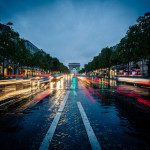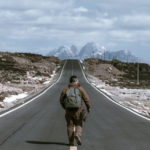In the past, we’ve explained how beginners might get started shooting timelapse photography. While time-consuming, the shooting itself isn’t as hard as it seems. In the following video, Ted Forbes shows us his three preferred methods, which involve simple cameras, no sped-up video, and no SLRs:
Forbes offers three cameras as solutions: a smartphone, a Mobius Actioncam, and a Sony Rx100 Mark III. Each has different strengths and weaknesses, and for all of them you’ll need a tripod and a vision of what your final product will look like—how many frames per second, how long the video will last, etc.
If you’re shooting at the US standard of 24 frames per second, you’ll need 240 images to fill 10 seconds. With each image being taken five seconds apart, that means 10 seconds of footage will take 20 minutes to shoot, so be sure to give yourself enough time—to say nothing of the time needed to set up the shot.

A Mobius Actioncam
- The smartphone option is handy because you can download an app that does everything for you. Some apps will even stitch the photos together into a video, automating the entire process; others will simply let you save the images as JPEGs so you can edit and compile them in Adobe Lightroom. The image quality will only be as good as your camera’s, however, and the full automation may be a negative for more hands-on photographers.
- The Mobius Actioncam is a little-known competitor to the GoPro. It’s tiny, durable, and totally no-frills: there’s no viewfinder or screen, so you’ve got to trust your instinct and shoot where you think the image will turn out okay. There’s a separate mode for timelapse photos, so once again your images will be fully automated with a built-in intervalometer. The quality is impressive, though it doesn’t do so well in low light—but for $80 it’s hard to complain.
- Forbes’s last suggestion is a strong compact camera, the Sony RX100 Mark III. The upside is that the picture quality for a camera such as this will be finer than either of the other two options, but the downside—aside from the price tag—is that there’s no intervalometer built in, so you’ll have to buy that separately. They’re not expensive, but it’s still an additional cost.
Forbes recommends against using entry-level SLRs for timelapse photography, since you’ll have to take a lot of precautions to make sure there’s no flickering. Turning off auto-focus is a must, while he also suggests manually setting the shutter speed and aperture, but leaving the ISO on automatic, so the degree of light levels itself out.
What tips do you have for those who are new to timelapse photography?
Like This Article?
Don't Miss The Next One!
Join over 100,000 photographers of all experience levels who receive our free photography tips and articles to stay current:







Leave a Reply